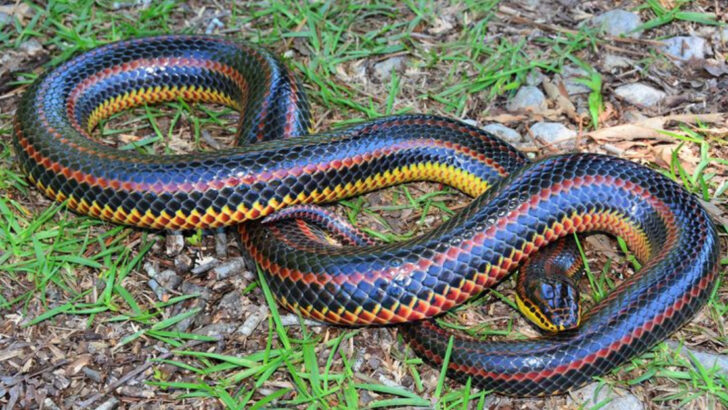Forget what you’ve heard—snakes aren’t all dull, drab, or creepy.
Some of them are living rainbows with fangs.
From electric blues to neon reds, the U.S. is crawling with serpents that look like they belong in an art exhibit, not under a log.
They slither like fire.
They shimmer like oil.
And they wear their colors with the kind of confidence that says, “Touch me and see what happens.”
These snakes aren’t trying to blend in.
They’re showing off—bold, beautiful, and often dangerous.
Whether they’re harmless mimics or venomous showstoppers, their patterns are pure drama.
So if you thought the reptile world was all muted greens and browns,
buckle up.
The wild has a flair for fashion, and these snakes are strutting right through it.
Let’s meet the most dazzling serpents lighting up the American wilds.
Eastern Coral Snake
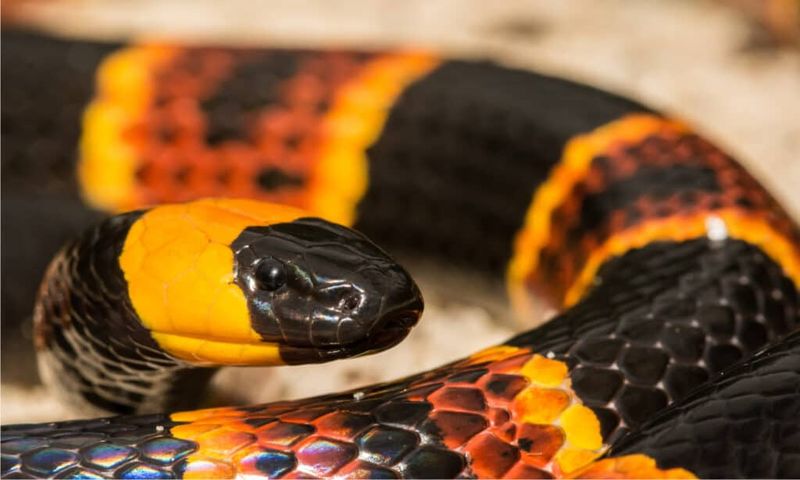
The Eastern Coral Snake is a visual masterpiece with its bold bands of black, yellow, and red. Found primarily in the southeastern United States, this snake is often mistaken for the non-venomous Scarlet Kingsnake. Its vibrant coloration serves as a warning to potential predators. Eastern Coral Snakes prefer wooded, sandy, or marshy environments where they can hide under debris during the day. Despite their shy nature, they possess a potent venom. Conservation efforts focus on protecting their natural habitats to ensure their survival. Did you know? Their venom is neurotoxic, affecting the nervous system.
Scarlet Kingsnake
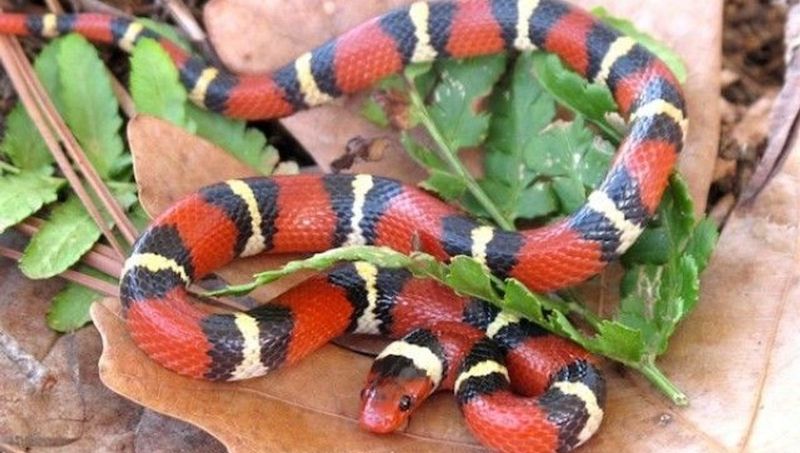
With a dazzling palette of red, black, and yellow, the Scarlet Kingsnake is a true natural marvel. Often seen as a mimic of the venomous coral snake, this non-venomous snake is harmless to humans. Found throughout the southeastern United States, it thrives in forests, fields, and even suburban areas. Its mimicry is a classic example of Batesian mimicry, which deters predators. The Scarlet Kingsnake is nocturnal, preferring to hunt small rodents and lizards at night. Fun fact: Their striking colors are most vivid after shedding their skin.
California Kingsnake
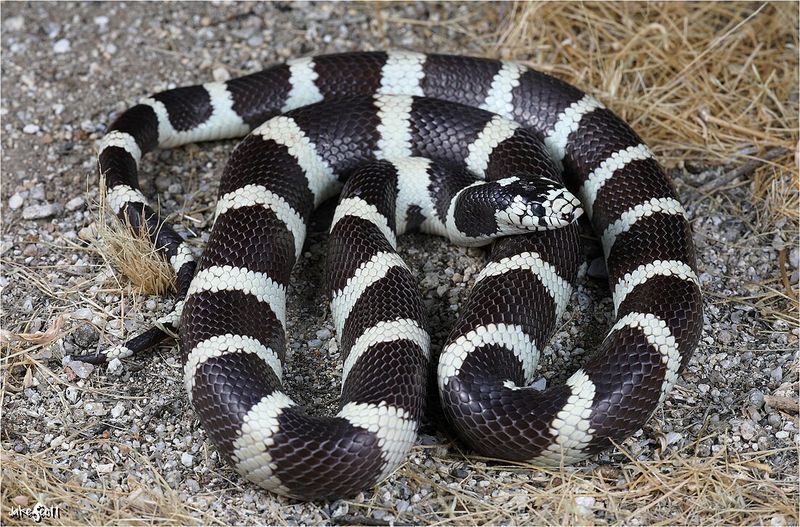
The California Kingsnake’s contrasting bands of black and white or cream make it a standout. This adaptable snake is found across various habitats in the western United States, from deserts to forests. Known for its immunity to rattlesnake venom, it often preys on other snakes. Its striking appearance is not just for show; it serves as a warning to potential predators. The kingsnake is a constrictor, using its powerful body to subdue prey. Interestingly, the variety in their band patterns can help identify their specific geographic origin.
Garter Snake
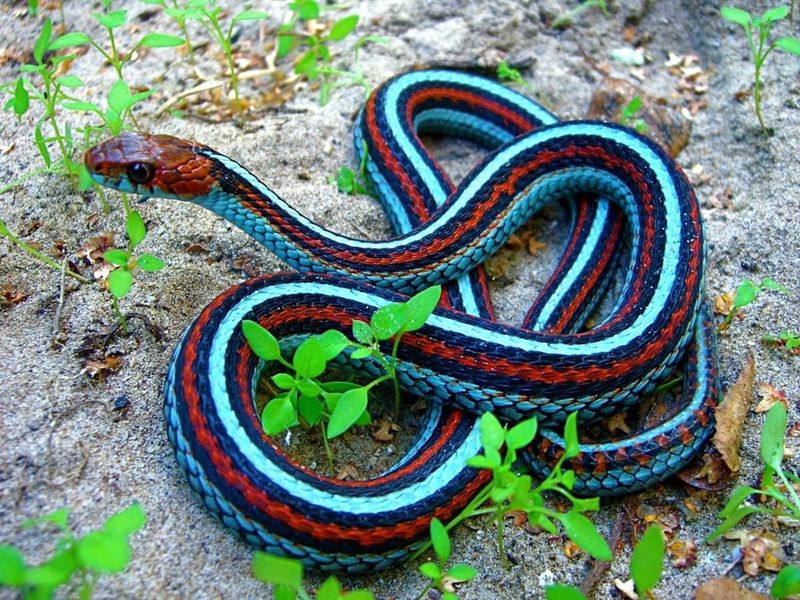
Garter Snakes, often seen in gardens and near water, are known for their vibrant stripes. These stripes can vary in color, including red, yellow, and olive green. Found throughout North America, they are one of the most common snakes encountered. Their diet primarily consists of amphibians and small fish. Despite their bright appearance, Garter Snakes are non-venomous and generally harmless to humans. They play a significant role in controlling pest populations. A quirky fact: Their saliva is mildly toxic to amphibians, aiding in subduing prey.
Ring-necked Snake
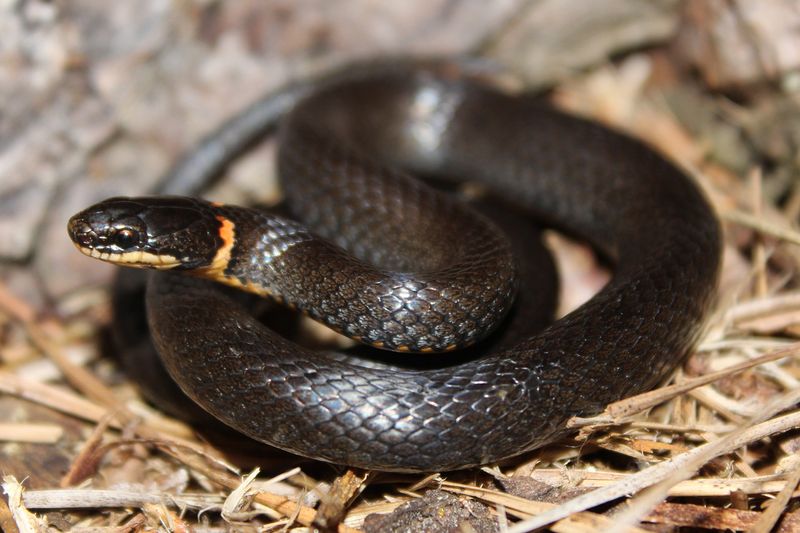
The Ring-necked Snake is easily recognized by the bright orange or yellow ring around its neck. This diminutive snake is found across the United States, often in moist environments like woodlands and grasslands. Its underside is equally striking, featuring bright red or orange. Ring-necked Snakes are secretive and rarely seen during the day. They feed on insects, small amphibians, and other invertebrates. When threatened, they may emit a foul-smelling musk as a defense. Fun tidbit: Their nocturnal nature makes them more active after dark.
Milk Snake
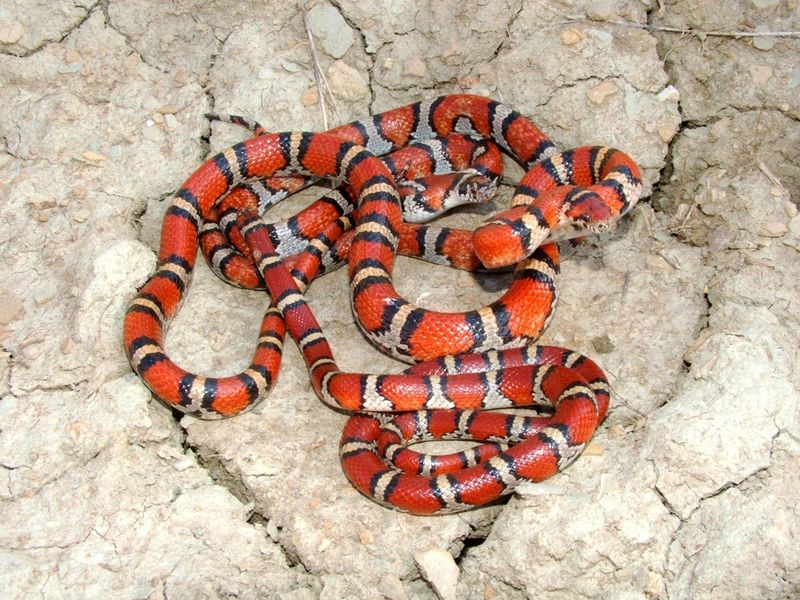
Milk Snakes are known for their eye-catching red, black, and white bands. Found throughout the eastern and central U.S., they inhabit fields, woodlands, and rocky slopes. A non-venomous species, Milk Snakes are often confused with the venomous coral snakes. Their diet includes small mammals, birds, and lizards. These snakes are adept climbers and can often be found in barns or old buildings. Their name originates from the false belief that they milked cows. Did you know? Their vivid coloration is an example of mimicry, deterring predators.
Western Ribbon Snake
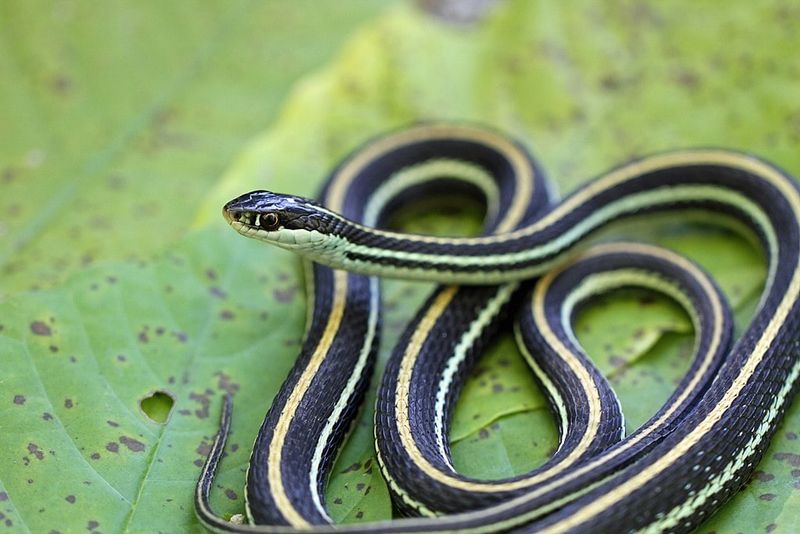
Western Ribbon Snakes are slender and elegant, graced with vivid green and yellow stripes. They inhabit marshes, ponds, and streams across the central United States. These non-venomous snakes are excellent swimmers, often seen gliding through the water with ease. They prey on amphibians and small fish. Western Ribbon Snakes are diurnal, meaning they are active during the day. Their striking coloration helps them blend into their lush surroundings. A curious fact: Their scales are keeled, providing extra grip in wet environments.
Corn Snake
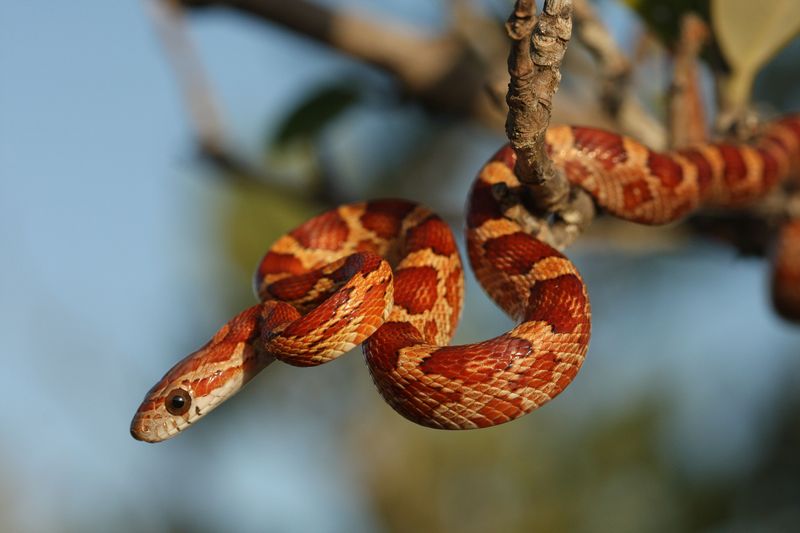
Corn Snakes are renowned for their rich orange and reddish-brown blotches, reminiscent of Indian corn. Found in the southeastern United States, they are a staple in the pet trade due to their docile nature. These snakes thrive in overgrown fields and forested areas. Their diet primarily consists of small rodents, which they constrict before consumption. Corn Snakes are excellent climbers and can often be found in trees. A tidbit: Their name comes from the pattern on their belly scales, resembling maize kernels.
Green Rat Snake
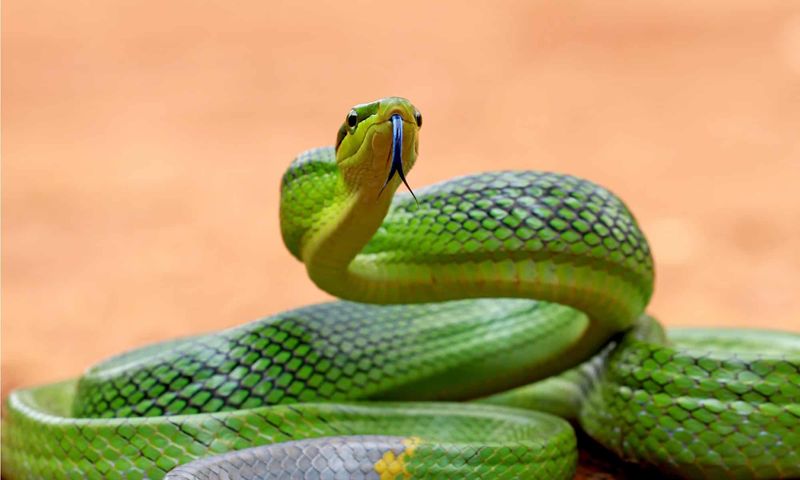
The Green Rat Snake is a stunning creature with its vivid emerald scales. Found primarily in the southeastern U.S., these snakes prefer forested areas where they can climb trees with ease. Non-venomous and skilled at catching rodents, they play a crucial role in pest control. Their bright color provides excellent camouflage among the leaves. Green Rat Snakes are active during the day, often seen basking in sunlight. An interesting fact: They can grow quite large, reaching lengths of up to six feet.
Eastern Indigo Snake
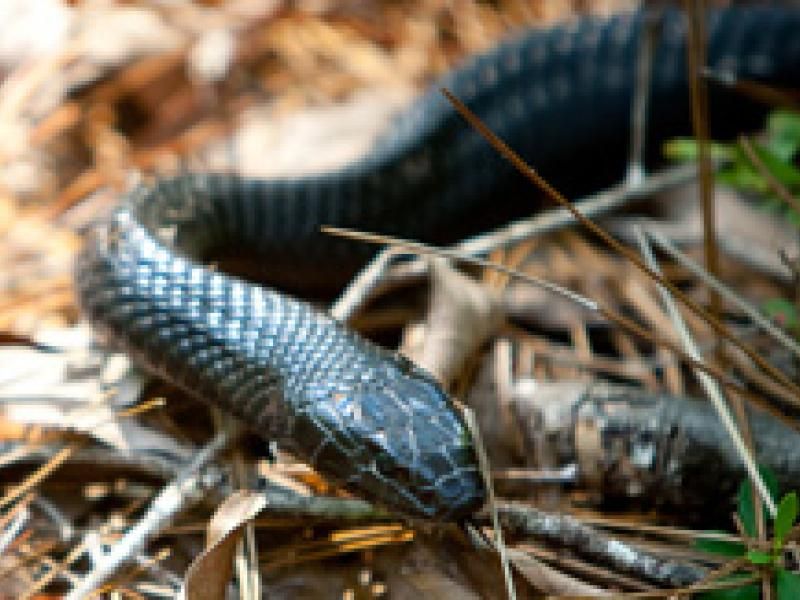
The Eastern Indigo Snake, with its glossy blue-black scales, is a sight to behold. This non-venomous giant is the longest native snake in the U.S., reaching up to nine feet. Found in the southeastern states, it prefers habitats like pine flatwoods and hardwood forests. Despite its large size, it is non-aggressive and feeds on a variety of small animals, including venomous snakes. The Indigo Snake’s presence is an indicator of a healthy ecosystem. Did you know? Their name comes from the iridescent sheen that resembles indigo dye.
Copperhead
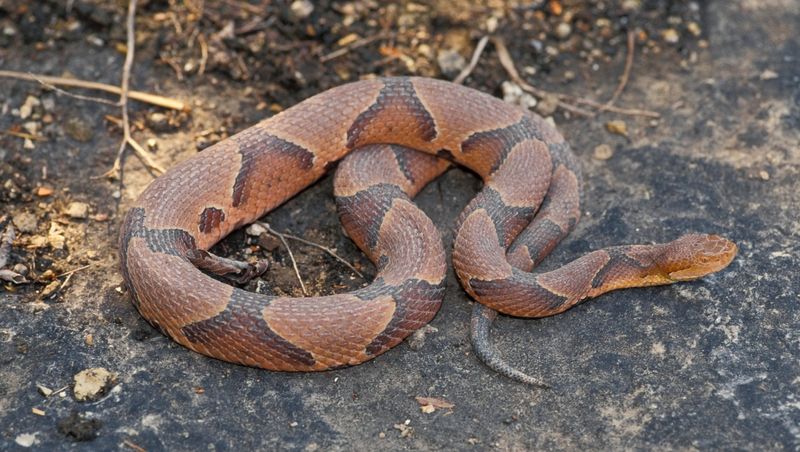
Copperhead Snakes are easily recognized by their copper-colored head and pinkish-brown body. Their hourglass pattern helps them blend into the forest floor of the eastern U.S. Copperheads are venomous but generally pose little danger to humans if left undisturbed. These snakes are ambush predators, lying in wait for unsuspecting prey like rodents and insects. They are most active during the cooler hours of the day. An intriguing fact: Juvenile Copperheads use their bright yellow tail tips to lure prey.
Timber Rattlesnake
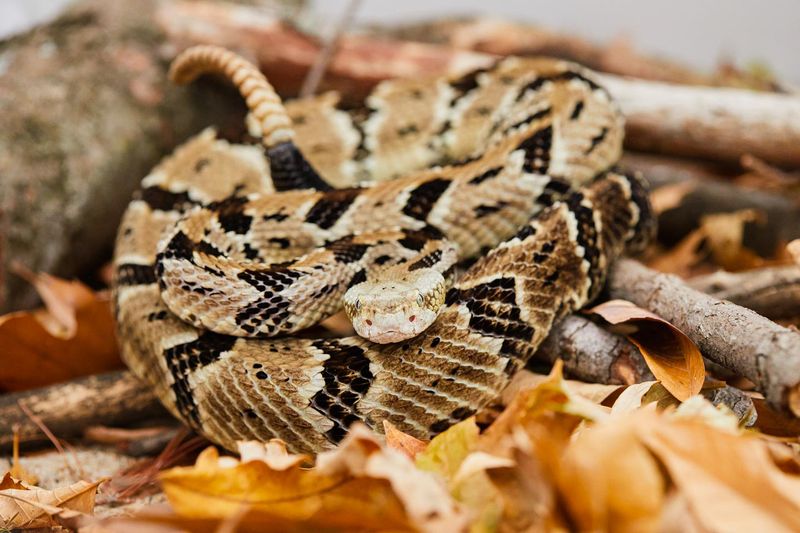
Timber Rattlesnakes, with their bold black and brown bands, are both beautiful and formidable. Found in deciduous forests of the eastern U.S., they prefer rocky outcrops and wooded hillsides. These venomous snakes are known for their distinctive rattle, a warning to potential threats. Their diet mainly consists of small mammals, and they play a vital role in controlling rodent populations. Despite their fearsome reputation, bites are rare. A compelling fact: Timber Rattlesnakes have a high tolerance for cold weather, hibernating in communal dens during winter.
Cottonmouth
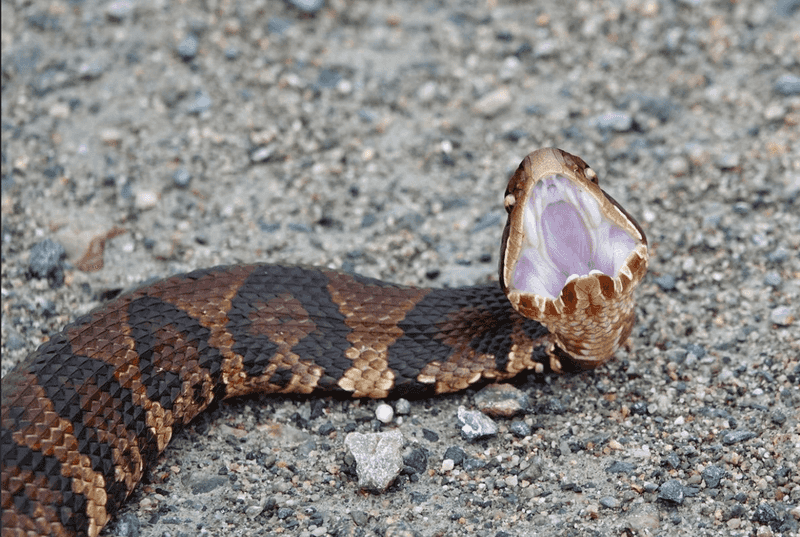
The Cottonmouth, or Water Moccasin, is known for its threatening gape, exposing a white mouth as a warning. These snakes, with their olive-brown bodies, inhabit the southeastern U.S. in swamps, marshes, and slow-moving streams. They are semi-aquatic and can be seen swimming with their heads above water. Cottonmouths are venomous and prey on fish and small amphibians. Their defensive behavior is often misunderstood as aggression. An unusual fact: They can release a foul-smelling musk when threatened.
Eastern Hognose Snake

Eastern Hognose Snakes are easily identified by their upturned snout and playful behavior. Found in sandy areas and open fields across the eastern U.S., they are masters at bluffing threats. When threatened, they may play dead or flatten their necks like a cobra. Their varied color patterns, ranging from brown to yellow, provide excellent camouflage. Non-venomous, they feed primarily on toads. A surprising detail: They have mild venom, which helps subdue amphibian prey but poses no threat to humans.
Texas Rat Snake
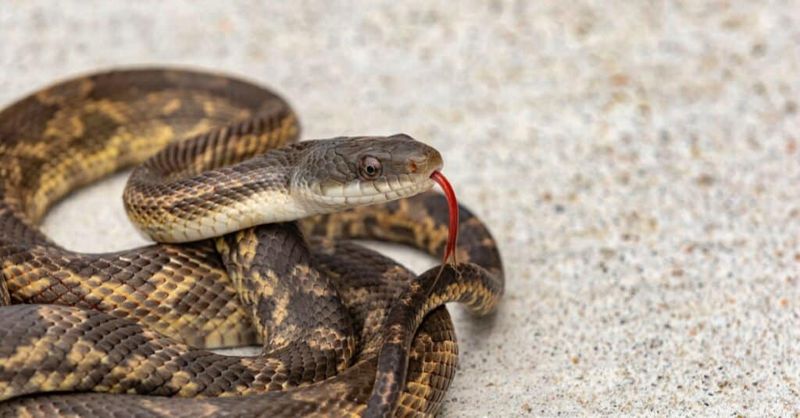
Texas Rat Snakes are robust and adaptable, known for their gray and brown blotches. Found in the southern U.S., they thrive in forests, fields, and even urban areas. These non-venomous snakes are adept climbers, often seen in trees or barns hunting for rodents. Their varied diet also includes birds and eggs. Despite their size, they are generally shy and avoid confrontation. An interesting tidbit: Their coloration can vary significantly, sometimes appearing almost black in certain regions.
Black Racer
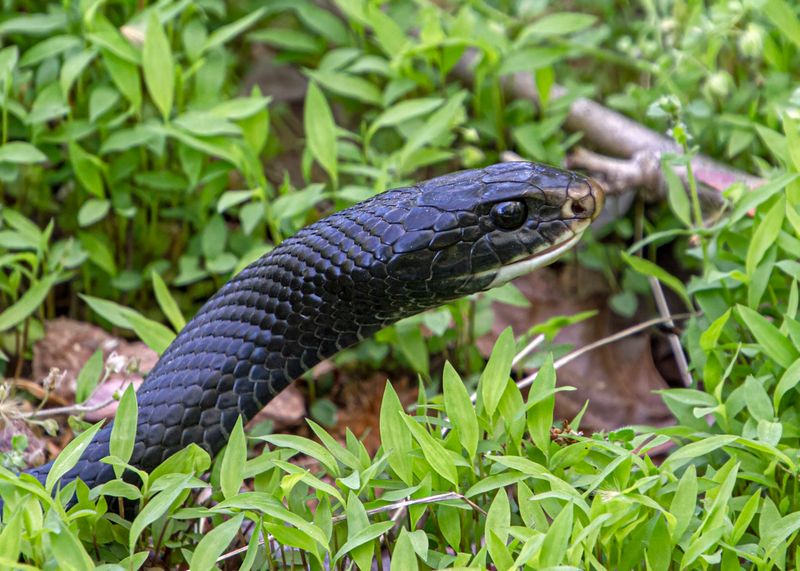
Black Racers are agile and sleek, known for their glossy black scales and rapid movements. These non-venomous snakes are found throughout the eastern U.S., often in open fields and forests. They are diurnal hunters, feeding on rodents, amphibians, and insects. Despite their speed and alertness, they are non-aggressive towards humans. Black Racers play an important role in controlling pest populations. Fun fact: They are known for their curious nature, often raising their heads to survey their surroundings.
Speckled Kingsnake
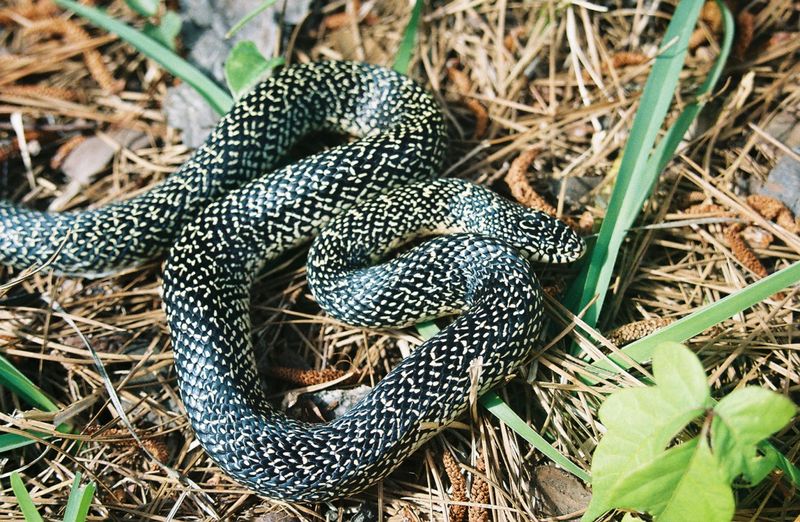
The Speckled Kingsnake is a stunning sight with its dark body covered in yellow specks. Found in the central and southern U.S., they inhabit forests, fields, and wetlands. Known for their resistance to venom, they prey on other snakes, including venomous species. Their striking appearance is both a defense mechanism and a form of camouflage. Despite their fearsome diet, they are harmless to humans. An intriguing fact: Their nickname, “salt-and-pepper snake,” comes from their distinctive speckled pattern.
Red-bellied Snake
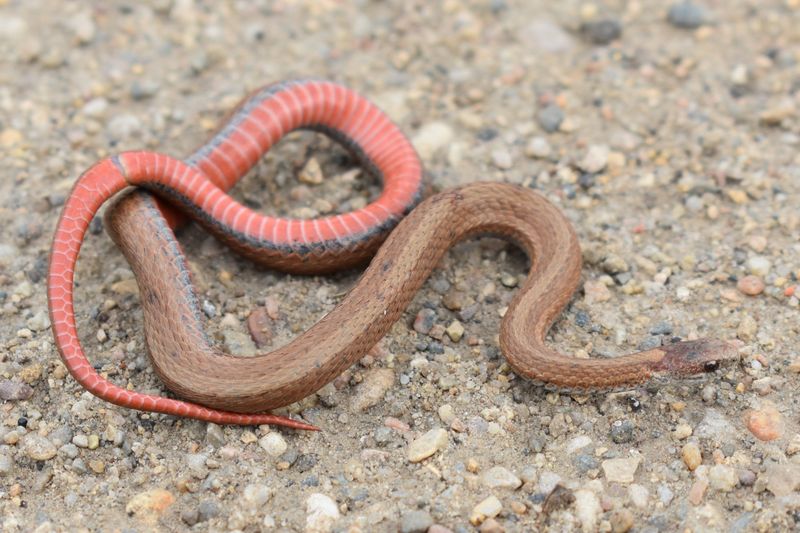
Red-bellied Snakes are small yet captivating, with their bright red underbelly as their hallmark. Found in moist forests and fields across the eastern U.S., they are often hidden under logs and rocks. Non-venomous and secretive, they primarily feed on slugs and insects. Their small size and elusive nature make them rarely seen by humans. When threatened, they may curl their lips and expose their brightly colored belly as a warning. A quirky fact: These snakes can emit a foul odor to deter predators.
Rainbow Snake
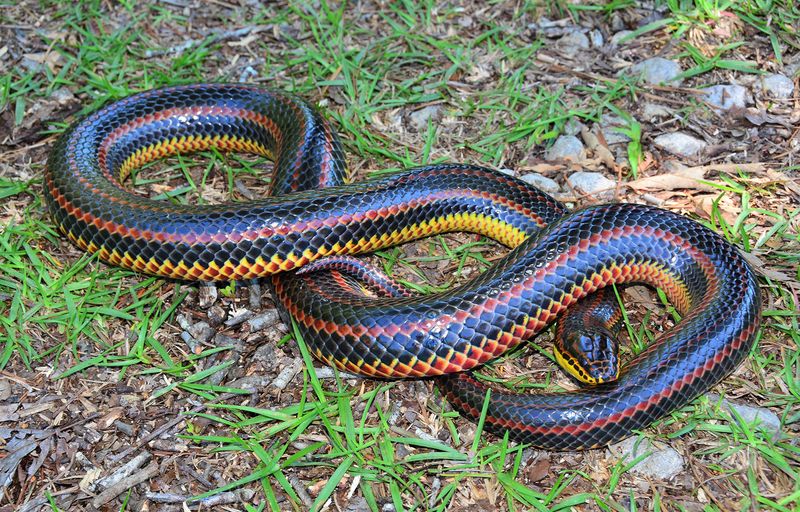
The Rainbow Snake is aptly named for its iridescent scales that shimmer with a spectrum of colors. Inhabiting coastal plain streams from Maryland to Florida, these elusive snakes are rarely seen. They are non-venomous and feed primarily on eels. The Rainbow Snake is known for its striking appearance, often compared to a living jewel. Despite their beauty, little is known about their behavior due to their secretive nature. An interesting fact: They are sometimes called “eel moccasins” due to their diet.
Banded Water Snake
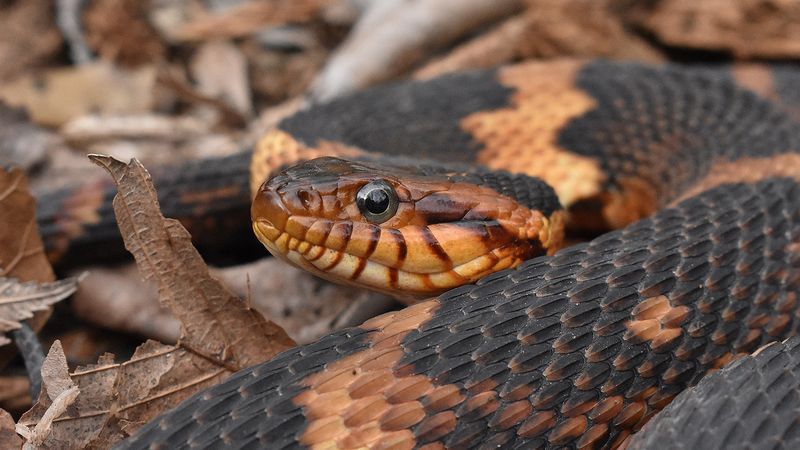
Banded Water Snakes are commonly found in the southeastern U.S., frequenting ponds, lakes, and marshes. Their alternating dark and light bands provide excellent camouflage in the dappled light of their aquatic habitats. Non-venomous, they feed on fish and amphibians, often mistaken for the venomous Cottonmouth. Banded Water Snakes are vivacious swimmers and can remain underwater for extended periods. When threatened, they may exhibit a defensive posture but are largely harmless. A notable fact: Their keeled scales help them navigate through water efficiently.

